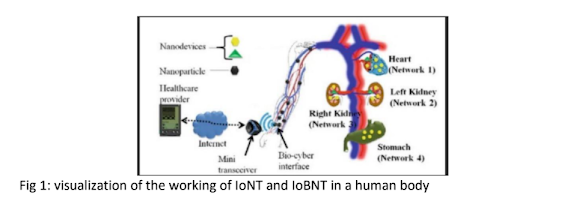Higgs Field & the God Particle
The Higgs Field and The God Particle
Have you ever wondered why we have mass? Well yeah, it's because we're made of atoms, and those have mass. But how did atoms get mass? How did protons, neutrons, electrons and quarks all get mass? Does it just appear, out of no where? What exactly is mass in the first place?
Simply put, mass is the amount of substance, a body or object contains, and so is affected by gravity. It is also a measure of inertia; the amount of resistance an object shows when there is a change in its' state of rest or motion. It can also be defined as the amount of force required to accelerate a body. It is inter-related to energy, and mass can be converted to energy, and back, as proved by Einsteins' theory of special relativity ( E = mc^2 ) . In short, mass is energy. Without mass, we wouldn't exist the way we do, we'd probably be more like light...
The law of conservation of mass says that mass can neither be created nor destroyed in a closed system, and so the same applies for energy too. So mass doesn't appear out of nowhere, since energy doesn't appear out of 'nowhere'. So how do bodies have mass? This is where, the Higgs field, and the Higgs Boson AKA the God particle, come in.
In the year 1964, a group of scientists, including Peter Higgs, proposed a field* of energy that existed in every region of the universe, which allowed interaction and excitation of particles, to give them mass. Now this Higgs field, is made up of multitudes of small particles, called Higgs bosons**. These particles are what really give mass to fundamental particles like quarks and electrons. . The Higgs boson is a quantum excitation of the Higgs field, it acts as a carrier to the field, to affect other particles and give them mass. There are predicted to be 5 types of Higgs bosons, and each of them get mass from their own interactions with the field.
To get a clearer idea of how particles 'get' mass, think of a person in a swimming pool. The still water can be considered as the Higgs field, the water molecules as the Higgs boson, and the person as a particle. As the person swims through the water, drag force acts on them, slowing them down, and in the same way, a particle in the Higgs field slows down, 'gaining' mass. The spontaneous symmetry of the field gets broken, in other words, causing the gain in mass.
Up until the last decade, the Higgs field and its' associated boson only existed as theories (hence the boson was colloquially called the God particle, going on faith) , but in the year 2012, scientists at CERN (Conseil Européen pour la Recherche Nucléaire ) working at the LHC (Large Hadron Collider) in Geneva, Switzerland, managed to detect this wonderful particle during a particle acceleration. The excitation, and other characteristics theorized to be possessed by the boson were seen, and so they found that, the 'God particle' actually existed. The 'interaction' that was detected to prove the existence of the boson, can be thought of, as a splash, when a diver jumps into a pool.
LHC at CERN Geneva
Not all particles have mass however; photons*** don't. This is because they represent light, an electromagnetic wave, which passes through the Higgs field without breaking its' symmetry, and so, don't 'interact' with it. Technically electrons, are particles, which according to the Quantum Field Theory, shouldn't have mass, however, they can have only finite quantum states, and don't travel at the speed of light, so they do in fact have mass, due to an unusual interaction with the Higgs field, involving parity violation****.
Those particles that interact more with the Higgs field, gain more mass than the particles that interact less with the field, as is the case with photons, that don't interact, or interact very little, to have mass. Photons are an exception when it comes to interacting with the Higgs field and gaining mass. Despite not having mass, they still have a lot of energy, so E = mc^2 doesn't apply to it, instead, a more general equation E2 = p2c2 + m2c4 applies to it, where p = momentum*****. That way, when the mass is 0, we're left with E = pc, which a photon does obey. Quarks, fundamental particles that make up protons and neutrons, interact more with the Higgs field than electrons, and so have more mass than them.
Keywords :-
* Field ~ a physical quantity that has a value in each part of the universe, where an object experiences a force.
** Boson ~ A particle with integral-spin, which follows Bose-Einstein statistics. They are 'force particles', as they control the interaction of forces like electromagnetism. Bosons carry energy, and are made of particles called fermions (quarks and leptons) with half-integer spins.
*** Photon ~ An elementary particle representing a quantum of light or other electromagnetic radiation. It carries energy proportional to radiation frequency, but has zero rest mass.
**** Parity violation ~ Put in the simplest way, is a weak interaction in the field, which causes a difference in the left and right spins of the particle. (for more info, search up helicity and chirality, then specifically of electrons).
*****Momentum ~ mass x velocity of the object/particle.
~ ♡ Mridini
Some interesting sites to visit :~
https://scitechdaily.com/science-made-simple-what-is-the-higgs-boson-god-particle/
https://www.energy.gov/science/doe-explainsthe-higgs-boson
https://cosmicescapes.com/higgs-field/
https://wtamu.edu/~cbaird/sq/2014/04/01/light-has-no-mass-so-it-also-has-no-energy-according-to-einstein-but-how-can-sunlight-warm-the-earth-without-energy/







Comments
Post a Comment